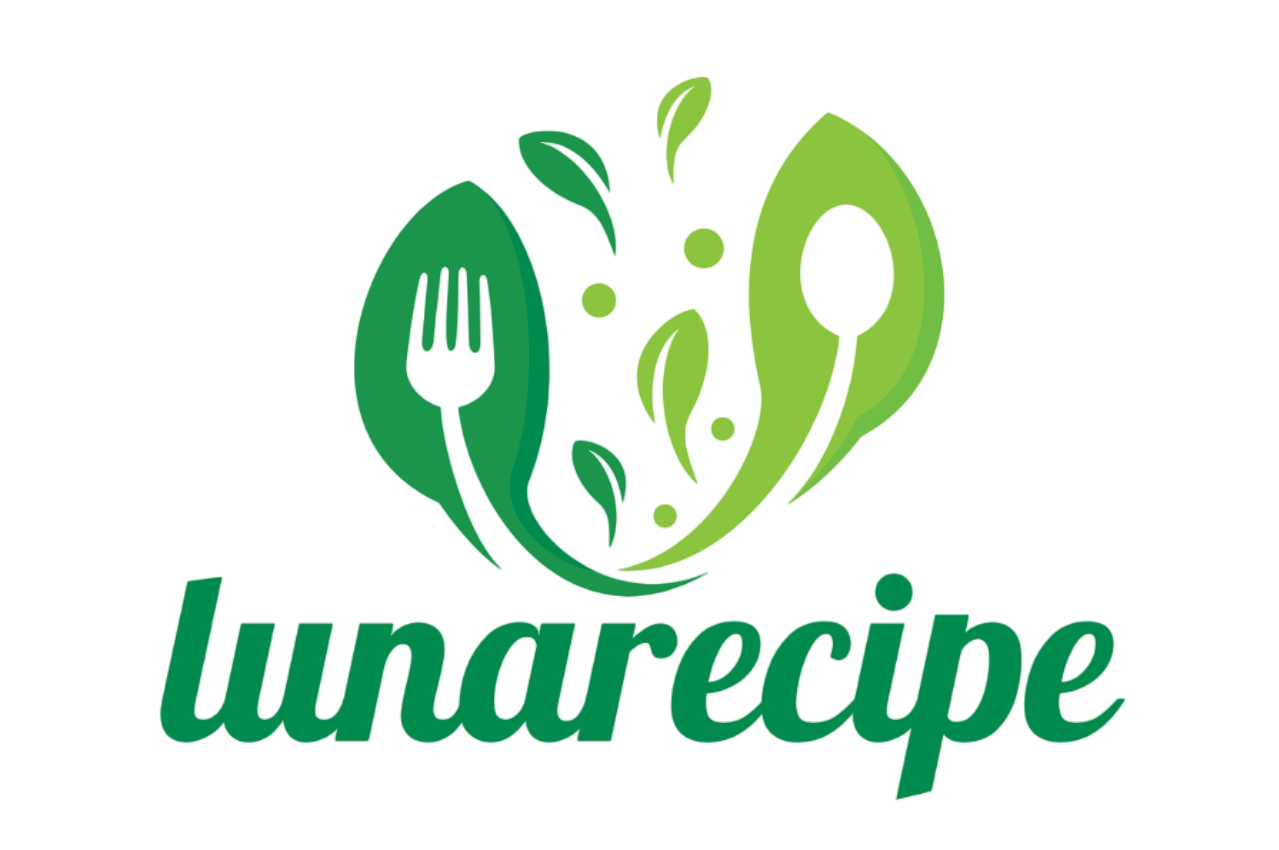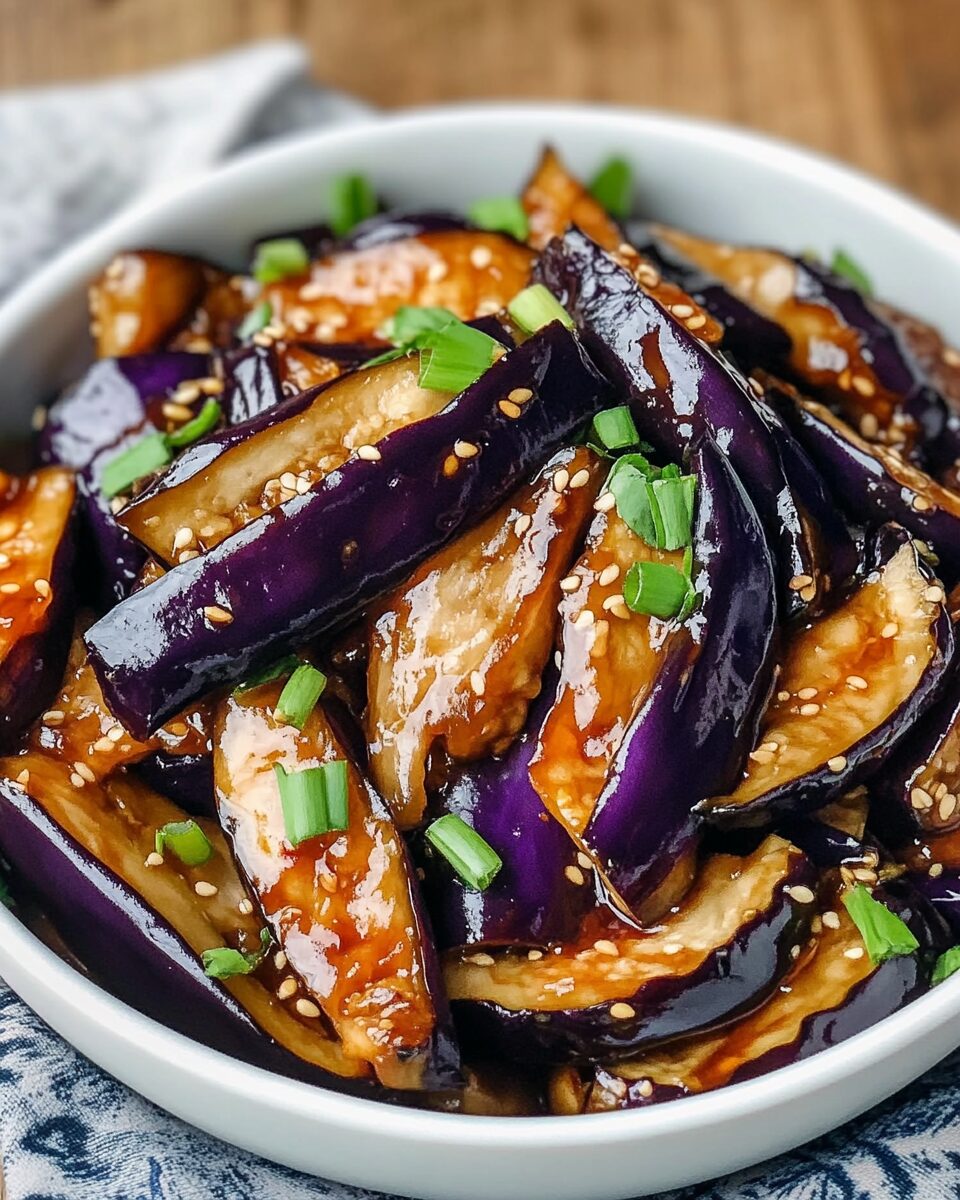Crispy on the outside, silky on the inside—this Chinese eggplant recipe is a masterpiece of texture and taste. Bathed in a sweet-savory garlic soy glaze, every bite bursts with flavor. It’s a restaurant-worthy dish you can recreate at home with a handful of pantry staples and a little frying finesse.
Perfect as a side dish, appetizer, or even a main over steamed jasmine rice, this eggplant recipe will change the way you think about vegetables. Whether you’re a die-hard eggplant lover or skeptical convert, this crispy creation is hard to resist. It’s a tribute to the incredible flavors of modern Asian cuisine.
Full Recipe:
-
600g / 1.2 lb Chinese eggplants (or Japanese eggplants)
-
1 ½ tsp salt
-
1 cup cornflour/cornstarch
-
Vegetable oil for frying
Sweet Soy Garlic Sauce:
-
2 tbsp soy sauce
-
1 tbsp Chinese black vinegar
-
1 ½ tbsp Chinese cooking wine (Shaoxing wine)
-
1 tbsp hoisin sauce
-
1 ½ tbsp brown sugar
-
2 tsp cornstarch
-
1 tsp sesame oil
-
2 garlic cloves, finely minced
-
2 tsp ginger, finely minced
-
2 tbsp water
Garnish:
-
2 green onions, finely sliced
-
1 tsp sesame seeds
Directions:
-
Cut the eggplants into thick batons (about 2.5 x 5cm / 1 x 2 inch).
-
Place eggplant pieces in a large colander, sprinkle with salt, toss, and leave for 30 minutes to draw out moisture.
-
Rinse under running water, then pat very dry using paper towels.
-
Heat enough oil in a pot for deep frying to 180°C/350°F.
-
Coat eggplant pieces thoroughly with cornstarch, shaking off excess.
-
Fry in batches for 2-3 minutes until golden and crisp. Transfer to paper towel-lined tray to drain.
-
Mix all sauce ingredients in a small bowl.
-
In a large non-stick skillet or wok over medium heat, pour in the sauce. Cook while stirring until it thickens and becomes glossy.
-
Add fried eggplant into the pan, toss quickly to coat evenly, about 30 seconds.
-
Serve hot, garnished with green onions and sesame seeds.
Prep Time: 35 minutes | Cooking Time: 10 minutes | Total Time: 45 minutes
Kcal: 280 kcal | Servings: 4 servings
Introduction to Crispy Chinese Eggplant
Crispy Chinese Eggplant is more than just another vegetable side—it’s an indulgent fusion of texture and flavor that elevates the humble eggplant into a gourmet experience. Inspired by a signature dish from a renowned Sydney Modern-Asian restaurant, this recipe combines crispy deep-fried eggplant pieces with a glossy, sticky, sweet-savory sauce made from classic Asian condiments like soy sauce, hoisin, and Chinese black vinegar. It’s a dish that surprises and delights, especially for those who think they’re not eggplant lovers.
Chinese eggplant has long been favored in Asian cuisine for its delicate, slightly sweet flavor and tender flesh. Unlike the large globe eggplants common in Western markets, Chinese eggplants are thinner, with a softer texture and fewer seeds, making them perfect for quick frying without becoming bitter or tough. In this dish, the eggplants are first salted to remove excess moisture, then lightly dusted with cornstarch and deep-fried to golden perfection.
Why This Dish Is a Must-Try
What makes this crispy eggplant dish so special is its irresistible contrast between the crunchy coating and the silky interior. When coated in the sticky, garlicky sauce, each bite delivers a burst of umami flavor that keeps you coming back for more. It’s not just a side dish; it’s a centerpiece.
Whether you’re serving it at a dinner party, making it as a meatless main, or pairing it with steamed rice or noodles, this dish holds its own. It also bridges the gap between comfort food and modern dining, making it suitable for everything from weeknight dinners to fancy dinner parties.
The Technique Behind the Crunch
The magic of this dish lies in its cooking technique. The eggplant pieces are salted to draw out moisture—a crucial step that ensures they fry up crisp and not soggy. After patting them dry, they’re tossed in cornstarch, which forms a delicate, shatteringly crisp crust when fried.
Unlike Western-style battered frying, this method results in a lighter, crunchier texture that complements the sauce rather than getting soggy under it. Once the eggplants are golden and drained, they are tossed quickly in a bubbling sauce that thickens into a glaze, clinging to each piece without soaking through the crust.
The sauce itself is a perfect blend of sweet, salty, and tangy. Hoisin sauce adds depth and richness, soy sauce gives a salty backbone, while Chinese black vinegar provides a sharp, complex acidity. Ginger and garlic build aromatic complexity, and a hint of sesame oil ties everything together with its nutty fragrance.
Nutritional Value and Plant-Based Appeal
One of the strengths of this dish is its compatibility with vegetarian and even vegan diets. Despite its indulgent flavors, it contains no animal products, making it suitable for anyone on a plant-based journey. Eggplant is naturally low in calories and high in fiber, and while the frying adds richness, the absence of meat keeps the dish lighter than it tastes.
The dish also provides a satisfying alternative for those reducing their meat consumption without sacrificing flavor or satiety. Paired with a simple rice bowl or steamed greens, it creates a balanced and deeply satisfying meal.
The Cultural Inspiration
Crispy Chinese Eggplant draws inspiration from Chinese cuisine’s reverence for vegetables and masterful use of sauces. Eggplant is widely loved in China and used in dishes like “Yu Xiang Qie Zi” (fish-fragrant eggplant), which similarly uses soy sauce, garlic, and vinegar for bold flavors. However, this modern variation takes cues from fusion cuisine—combining traditional elements with restaurant-style plating and presentation.
This dish is a brilliant example of how a simple vegetable can be transformed with technique and thoughtful seasoning. It embodies the creativity that modern Asian cooking brings to the table, showcasing how heritage ingredients can be reimagined in exciting ways.
Serving Suggestions and Customizations
While the original version is hard to beat, there are plenty of ways to customize this dish to suit your tastes. If you prefer a spicier flavor, add chili garlic sauce or sprinkle crushed red pepper flakes over the finished eggplant. For a gluten-free version, use tamari in place of soy sauce and double-check your hoisin and vinegar labels for compliance.
For extra protein, crispy tofu or tempeh can be added to the sauce, or you can serve the eggplant alongside a simple stir-fried noodle dish. It also works beautifully as a topping for rice bowls, layered with pickled vegetables, scallions, and a drizzle of chili oil for added complexity.
Garnishing with freshly chopped scallions and sesame seeds adds freshness and visual appeal. A final drizzle of sesame oil right before serving enhances the aroma and gives the dish a polished, restaurant-style finish.
Tips for Perfect Results
-
Use Chinese or Japanese eggplants: These varieties are less bitter, have thinner skins, and absorb less oil.
-
Don’t skip the salting step: This removes excess water and prevents sogginess.
-
Fry in small batches: Overcrowding lowers oil temperature and results in limp eggplant.
-
Serve immediately: The crisp texture is best enjoyed fresh—reheating can make the coating soggy.
Proper preparation and timing are key to getting the best texture and flavor. With just a little attention to detail, anyone can achieve restaurant-quality results at home.
The Visual and Textural Appeal
Visually, this dish is striking. The golden-brown eggplant pieces glisten under the sticky glaze, accented by vibrant green scallions and sesame seeds. The plating possibilities are endless—you can serve it in a bowl as a rustic dish or arrange the pieces artfully for an elegant presentation.
Texture is another defining characteristic. The contrast between crispy exterior and meltingly tender interior makes this dish satisfying in a way that few vegetable preparations achieve. Combined with the rich, glossy sauce, the eggplant becomes almost addictive.
Storage and Leftovers
While best served fresh, leftovers can be stored in the fridge for up to two days. Keep in mind that the eggplant will lose its crispiness once refrigerated, but the flavor remains strong. Reheat gently in a skillet or oven to revive some texture. Avoid microwaving, which tends to make the coating soggy.
If you want to prepare ahead, you can pre-fry the eggplant and store it in the fridge, then reheat in the oven and toss with freshly made sauce before serving. This is a great trick for entertaining when you want to spend less time in the kitchen and more time with guests.
Conclusion: Why You’ll Keep Coming Back to This Dish
Crispy Chinese Eggplant is the kind of recipe that wins hearts from the very first bite. It’s proof that vegetables don’t need to be boring or bland—when prepared with care, they can be bold, flavorful, and even indulgent. With its crisp exterior, silky interior, and richly flavored sauce, this dish offers a multi-sensory experience that’s both comforting and exciting.
Whether you’re introducing someone to eggplant for the first time or you’re a seasoned plant-based eater looking for new favorites, this dish delivers on every front. It’s quick enough for weeknight cooking yet impressive enough for special occasions. Once you try it, you’ll find yourself returning to it again and again—not just because it’s delicious, but because it’s so easy to love.






